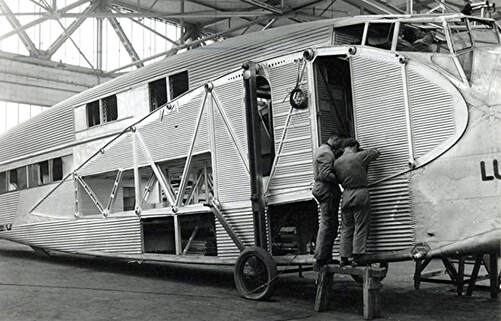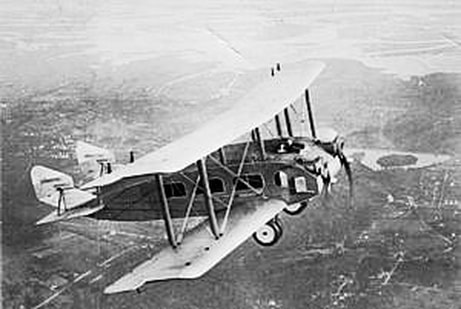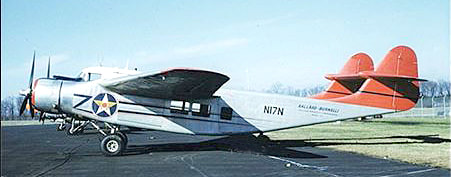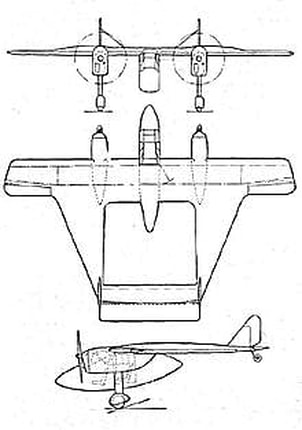Passengers in Wings (May 2021)

It is very unusual to carry passengers in wings, for a number of logical reasons. Wings have a special curved shape and are mostly quite thin so there’s no room for airline seats. Unless, of course, the aeroplane is very BIG. One designer who thought big was Hugo Junkers. In 1925 he proposed building an 80 seat Transatlantic airliner. This was two years before Lindbergh’s first non-stop crossing. That idea got nowhere but eventually he persuaded the German Air Ministry to release enough money for him to built the G-38.
With a span of 144 ft and four diesel engines delivering nearly 2000 hp it carried 13 passengers in spacious accommodation. When it first flew in November 1929 it was the largest aeroplane in the world.
Immediately it started breaking records for speed and distance in the admittedly thinly populated 5000kg category. The Reichsluftfahrtministerium were delighted to buy it outright, fit more powerful engines and add six more passenger seats.
With a span of 144 ft and four diesel engines delivering nearly 2000 hp it carried 13 passengers in spacious accommodation. When it first flew in November 1929 it was the largest aeroplane in the world.
Immediately it started breaking records for speed and distance in the admittedly thinly populated 5000kg category. The Reichsluftfahrtministerium were delighted to buy it outright, fit more powerful engines and add six more passenger seats.

This picture gives an appreciation of the G-38’s size. That opening above the two engineers isn’t for the wing spar. It’s a doorway, admittedly only 5’ 7” tall but definitely a doorway into the wing leading to . . . .

. . . a passenger compartment. Three seats were fitted there. Doubtless, the passengers in those seats paid extra, despite the noise. But – what a spectacular place to sit, and what a view. The nose compartment was intended to house the navigator, though later in the G-38’s life he was moved upstairs and two more passengers boosted the profits.

Throughout the 1930s D-AZUR and a second G-38, D-APIS (slightly larger with a double deck rear fuselage) flew into London and other European capitals, overshadowing the little biplanes used by other airlines. The second G-38 was written off after a crash (no passengers aboard) and D-AZUR saw service with the Luftwaffe in the war - at least until May 1941 when an RAF raid destroyed it on the ground at Athens.
Six G-38s were built under licence in Japan as the Mitsubishi Ki-20. They saw extensive service, including a ‘secret mission in Siberia’ and one survives in a museum in Japan. If you’ve been sufficiently intrigued by this monster which carried passengers in its wings you could commemorate it yourself with a Junkers G-38 watch, available from several suppliers.
Six G-38s were built under licence in Japan as the Mitsubishi Ki-20. They saw extensive service, including a ‘secret mission in Siberia’ and one survives in a museum in Japan. If you’ve been sufficiently intrigued by this monster which carried passengers in its wings you could commemorate it yourself with a Junkers G-38 watch, available from several suppliers.
In 1919 Vincent Burnelli, a young American aircraft designer, tried to predict what kind of aircraft would be needed as aviation developed in peacetime. In a burst of radical thinking he conceived the idea that if he made the big box that carries passengers wing-shaped he could carry more. The outcome was the RB-1

Vincent’s original dream was to make his body support 50% of the weight of the aeroplane. The RB-1 managed 15% and was, conveniently, badly damaged in an overnight storm.
The RB-2 was much better (though 50% was proving to be a distant dream). When it emerged in 1924 it was quite impressive. The picture on the left shows another positive feature of Burnelli’s design. The close coupled engines made single-engined flight much easier to control.
Impressive it might have been but not enough to attract any order. The RB-2 made many demonstration flights but the only money it earned came from a hiring by The Hudson Motor Company. It carried, not 25 passengers, but an Essex automobile. It was a flying auto showroom.
The Chairman of Sky Lines asked Burnelli to update his design and build a metal monoplane. The CB-16 was updated in more ways than one and appeared in 1929 with a retracting undercarriage, a first for multi-engined airliners.
The Chairman of Sky Lines asked Burnelli to update his design and build a metal monoplane. The CB-16 was updated in more ways than one and appeared in 1929 with a retracting undercarriage, a first for multi-engined airliners.

Vincent had further refined his format. The tail surfaces and controls on his previous designs had been attached to the rear of the lifting body. In the CB-16, the sides of the body were extended, as booms, and the tailplane, elevators and rudders now flew in cleaner air. Sadly, whilst the CB-16 was on a test flight it stalled and crashed. The pilots were unhurt but the CB-16 effectively died.

Sky Lines didn’t want to pay for a replacement so the Burnelli pattern was repeated. Vincent built a second CB-16 and it toured the airfields and shows looking for a customer. The car-carrying legend lived on and a rough modification repeated the feat.
There are hints in this picture which indicate why potential buyers were reluctant to part with their money. Look at those draggy radiators. And the large open cockpit and flat windscreen sit right at the point where the ‘lifting fuselage’ should be producing the most lift.
There are hints in this picture which indicate why potential buyers were reluctant to part with their money. Look at those draggy radiators. And the large open cockpit and flat windscreen sit right at the point where the ‘lifting fuselage’ should be producing the most lift.

Vincent was to rectify these flaws in the UB-14, which first flew in 1934. The engines are aircooled P&W 750 hp Hornets, slightly ‘toed out’ to assist single engine flight and the pilots are in a streamlined cockpit. The markings emphasize the shape of the lifting fuselage which could hold 14 -18 passengers.
Accustomed to the customer resistance in the States, Burnelli decided to demonstrate the UB-14 in Europe. He hired Clyde Pangborn (barnstormer, record breaker – first non-stop trans Pacific flight – MacRobertson Race, all-round aviation hero) to fly his latest creation across the Atlantic. At last, he found a customer.
Accustomed to the customer resistance in the States, Burnelli decided to demonstrate the UB-14 in Europe. He hired Clyde Pangborn (barnstormer, record breaker – first non-stop trans Pacific flight – MacRobertson Race, all-round aviation hero) to fly his latest creation across the Atlantic. At last, he found a customer.

Not to buy one, but to build several. The newly formed Cunliffe-Owen Aircraft Co at Eastleigh took out a licence and set up a production line. The first Cunliffe Owen OA-1 was rolled out in the summer of 1939. The test flights were performed by none other than Clyde Pangborn. (Thus, confusingly, the OA-1 was often called the Clyde Clipper). It wasn’t very well built and needed some reworking to get it serviceable. Then – WWII broke out. The Clipper {and Pangborn) joined the RAF.
The RAF used the Clipper but it was troublesome. No spares had ever been produced and keeping it serviceable was a serious problem. The solution was, some said, inspired. It was offered to the Free French Air Force to be converted into a personal transport for General de Gaulle. So in June 1941 it was delivered by, reportedly, Jim Mollison in his ATA role, to the French base at Fort Lamy in Chad. It’s not known how much CdG used it but undoubtedly, he must have complained about the lack of headroom. For some time it languished at an airfield near Cairo. It performed its last act of service on the bonfire in the VJ Day celebrations.
That’s not the end of the passengers in lifting fuselage story. Vincent Burnelli moved to Canada during the war and worked with the Canadian Car and Foundry. He formed an association with Lowell Yerex, a New Zealander who had run an airline in Honduras. They persuaded CCF to build Vincent’s latest design for a versatile passenger/freighter to be used in the Canadian arctic territories. Their combined initials designated it the CBY-3. It was actually a slightly larger update of the UB-14 and flew in 1944, just before the market was flooded with cheap ex-military transports.
That’s not the end of the passengers in lifting fuselage story. Vincent Burnelli moved to Canada during the war and worked with the Canadian Car and Foundry. He formed an association with Lowell Yerex, a New Zealander who had run an airline in Honduras. They persuaded CCF to build Vincent’s latest design for a versatile passenger/freighter to be used in the Canadian arctic territories. Their combined initials designated it the CBY-3. It was actually a slightly larger update of the UB-14 and flew in 1944, just before the market was flooded with cheap ex-military transports.

Poor old Vincent. He spent his life promoting his good idea, building what were practical and quite efficient aeroplanes which no one wanted to buy. His partners pulled out and he lent and hired out his last and best design until its value dropped to a level that someone would pay for a well used transport.

And well used it was. From 1955 to 1964 it trawled the skies in North and South America ending its working life in 1964, which just happens to be the year in which Vincent Burnelli died.
This very aeroplane is now cared for in the New England Air Museum in Connecticut.
This very aeroplane is now cared for in the New England Air Museum in Connecticut.
During its European tour the UB-14 had flown into Witney, near Oxford. There it was carefully examined by one Percival Nesbit Willoughby. Percy had studied aircraft design and thought it curious that the simplest least complex aeroplane – the flying wing – had not been developed. He discovered that an early patent for an annular wing (a circular disc with a hole in the middle) had been taken out in Germany as early as 1909. It was bought by an Englishman and Cedric Lee and Tilghman Richards built and flew a number of machines, monoplane, biplane and glider.
The monoplane is one of the originals, the biplane is a replica currently on display in the Newark Air Museum. Another non-flying replica appeared in the Magnificent Men film.
The monoplane is one of the originals, the biplane is a replica currently on display in the Newark Air Museum. Another non-flying replica appeared in the Magnificent Men film.
The Lee-Richards machines were flown in 1913 and 1914. Whilst they crashed as regularly as other aeroplanes of the same vintage apparently they all were stable and pleasant to fly. Development was curtailed by the war. Lee joined the RNVR and was killed in service, Richards went off to work for Beardmore.
Percy Willoughby learned what he could of the unusual aerodynamics of the annular wing. He formed a plan to build an aeroplane which would be able to take advantage of the considerable benefits of the wing shape and still have space to fit in passengers. He commissioned a comprehensive series of tests at the National Physics Laboratories, the wind tunnels at RAE Farnborough and at Guggenheim Institute in New York.
The tests revealed how the annular wing works. The ribs, which are set radially around the wing, are of the normal curved shape, thickest near the leading edge and narrowing to a thin trailing edge. Those at the front of the wing (12 o’ clock) face the airflow directly. At the rear of the wing (6 o’c) they also face the airflow. In construction the whole wing is slightly ‘dished’ as if the inner ring were to be pressed down. This makes the 12 o’c ribs face the airflow at a greater angle than the 6 o’c ribs – as a ‘normal’ aeroplane’s wing is set at a greater angle than the tailplane. So in cruising flight the forward half of the wing meets the airflow at a greater angle than the trailing half of the ring.
But when the pilot slows down he must maintain lift by increasing the angle of attack - raising the nose. The hole in the annular wing is now at an angle and the air begins to flow ‘upwards’ through the hole. To take advantage of this vortex the ribs at 3 o’c and 9 o’c are set facing inwards. Willoughby found that the amount of lift produced was remarkable. Later tests showed that even at landing speeds the wing was still producing lift and in no danger of stalling, a significant safety factor.
Percy Willoughby learned what he could of the unusual aerodynamics of the annular wing. He formed a plan to build an aeroplane which would be able to take advantage of the considerable benefits of the wing shape and still have space to fit in passengers. He commissioned a comprehensive series of tests at the National Physics Laboratories, the wind tunnels at RAE Farnborough and at Guggenheim Institute in New York.
The tests revealed how the annular wing works. The ribs, which are set radially around the wing, are of the normal curved shape, thickest near the leading edge and narrowing to a thin trailing edge. Those at the front of the wing (12 o’ clock) face the airflow directly. At the rear of the wing (6 o’c) they also face the airflow. In construction the whole wing is slightly ‘dished’ as if the inner ring were to be pressed down. This makes the 12 o’c ribs face the airflow at a greater angle than the 6 o’c ribs – as a ‘normal’ aeroplane’s wing is set at a greater angle than the tailplane. So in cruising flight the forward half of the wing meets the airflow at a greater angle than the trailing half of the ring.
But when the pilot slows down he must maintain lift by increasing the angle of attack - raising the nose. The hole in the annular wing is now at an angle and the air begins to flow ‘upwards’ through the hole. To take advantage of this vortex the ribs at 3 o’c and 9 o’c are set facing inwards. Willoughby found that the amount of lift produced was remarkable. Later tests showed that even at landing speeds the wing was still producing lift and in no danger of stalling, a significant safety factor.

He refined his design. To simplify construction he modified the pure annular shape, adding stubby wings, giving an overall span of 142 ft. The sides of the ring would be tapered booms carrying a substantial tail unit.
The 36 passengers would be seated in two pressurised cabins (headroom 5–7ft.) in the booms with an unpressurised connection tunnel between the cabins for use ‘in emergencies’.
Buried in the booms, the passengers would have no windows. Percy planned six roof windows to flood in the daylight. Then each passenger would have a little screen onto which would be projected the 360ª view from a lens in the floor of the cabin, a sort of camera obscura. The pilots had their own pressurised cabin behind the central of three engine (probably Merlins) and the whole ensemble would tip the scales at 40,000 lbs.

This was all for the future.
First, a small (34’ 6” span) test machine was built to prove the concept. Powered by two 128 hp Menasco Pirate engines, the central nacelle had two seats.
First, a small (34’ 6” span) test machine was built to prove the concept. Powered by two 128 hp Menasco Pirate engines, the central nacelle had two seats.
The little aeroplane, sometimes called Delta 8 but registered as Delta F was ready to fly in April 1939. The pilot, Hugh Olley, was the Chief Flying Instructor of the Witney and Oxford Aero Club, an experienced and competent pilot. From the first flight the Delta flew well, behaving as Willoughby expected and demonstrating no vices. It comfortably achieved its maximum speed of 183 mph, cruising at 165 mph and landing at 60 mph. Olley found that the ailerons were particularly effective though the elevator was rather heavy.

The following month The Delta 8 was demonstrated at the Royal Aeronautical Society garden party at the small Heathrow airfield. It attracted a great deal of favourable comment. Willoughby hoped that its sparkling performance would help in his quest for investment capital to build his airliner, Delta 9.

It was the summer of 1939 and the climate was not right for investing in a civilian airliner. Europe was in danger of plunging into war. Willoughby realised that it was only in America could he hope to get the backing he needed to build his revolutionary airliner.
He called his staff together and told them of his plans. He asked how many of them would be prepared to move to America. They all agreed they would come.
Now that the Delta 8 was going to be flown by many other pilots to evaluate its potential Hugh Olley had only one concern – that heavy elevator. He felt that the changing forces over the wide range of speeds at which it would be tested would be better controlled with a trim tab.
Willoughby worked out what was needed, the trim tab was made and quickly fitted. On the morning of 10th July both Olley and Willoughby climbed into the Delta 8 and took off from Witney to test the tab. Half an hour later, the Delta was seen diving steeply into the ground near Bicester. Both men died in the crash. Percy Willoughby was only 36 years old.
Examination of the wreckage concentrated on the trim tab. It was found that no stops had fitted even though it had a very wide range of movement. It was only speculation that it had somehow overpowered the pilot’s attempts to recover from the dive.
With Willoughby’s death, the project died too. His company and all its assets and records disappeared. Only these photographs and memories remain of the last man who tried to put passengers in wings.
Examination of the wreckage concentrated on the trim tab. It was found that no stops had fitted even though it had a very wide range of movement. It was only speculation that it had somehow overpowered the pilot’s attempts to recover from the dive.
With Willoughby’s death, the project died too. His company and all its assets and records disappeared. Only these photographs and memories remain of the last man who tried to put passengers in wings.








